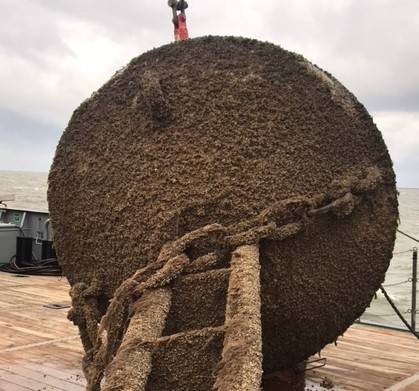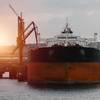Anti-Fouling Film Tested on Fairway Buoys
The biocide-free anti-fouling film, RENOLIT DOLPHIN S is already well established in in shipping industry. As a biocide-free alternative to anti-fouling paints, this product sets new standards. Further practical trials have now shown that this film could be suitable for other fields of application.
In April 2018, the German Waterways and Shipping Authority (WSA) in Bremerhaven decided to test this film solution from RENOLIT. “I found out about the film in an article and wondered if this wouldn’t be a good solution to the fouling of our fairway buoys. Sometimes these buoys get so heavily encrusted that they barely float above water and are thus hardly visible for passing vessels. For this reason, the buoys have to be checked and cleaned regularly,” says Jörg Böning from the WSA in Bremerhaven.
To test whether the film would also be suitable for fairway buoys, three buoys were prepared for testing in April 2018. One, (No. 45) was painted as usual with a corrosion protection, the second, (No. 47) was given an additional paint coating and the third buoy (No. 48) was wrapped with RENOLIT DOLPHIN S. All three were anchored in the Weser estuary about 10 km from Bremerhaven within an area of about half a nautical mile so that they would be subject to similar fouling. The buoy with the corrosion preventive paint (No. 45) was anchored on June 4 and the other two (No. 47 and No. 48) on May 30. After three months, the three buoys were lifted out of the water and evaluated.
When the buoys were lifted out of the water on August 30, 2018, the wrapped buoy showed the best results. The two buoys with the corrosion protection paint and the additional paint coating were heavily fouled with barnacles, mussels and algae. The buoy with the RENOLIT DOLPHIN S film on the other hand, was almost completely free of encrustation.* “I’m impressed,” says Böning, “If further long-term practical trials are equally positive, we will be able to cut overall operating costs by reducing the frequency of inspection trips to the buoys”.
*The small amount of fouling which is seen on the picture, is only located on the anchor chain which does not count to the part of the buoy which had to be wrapped.
















